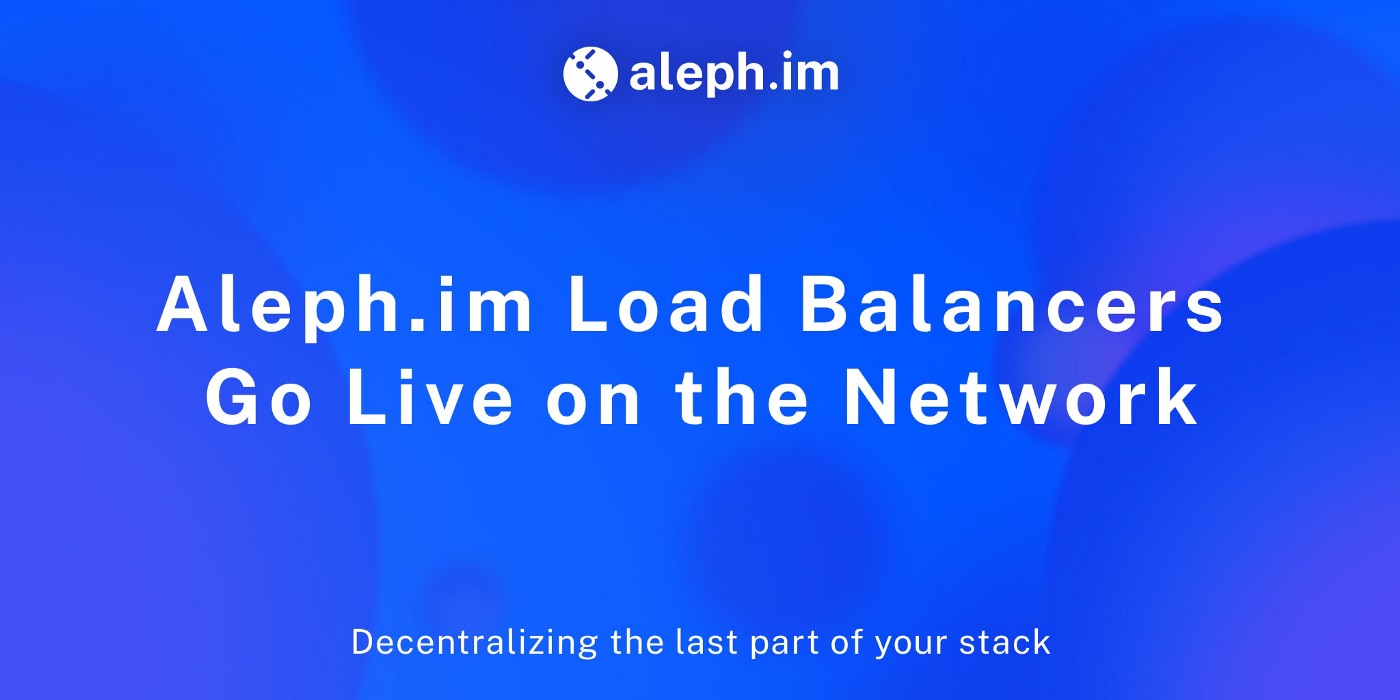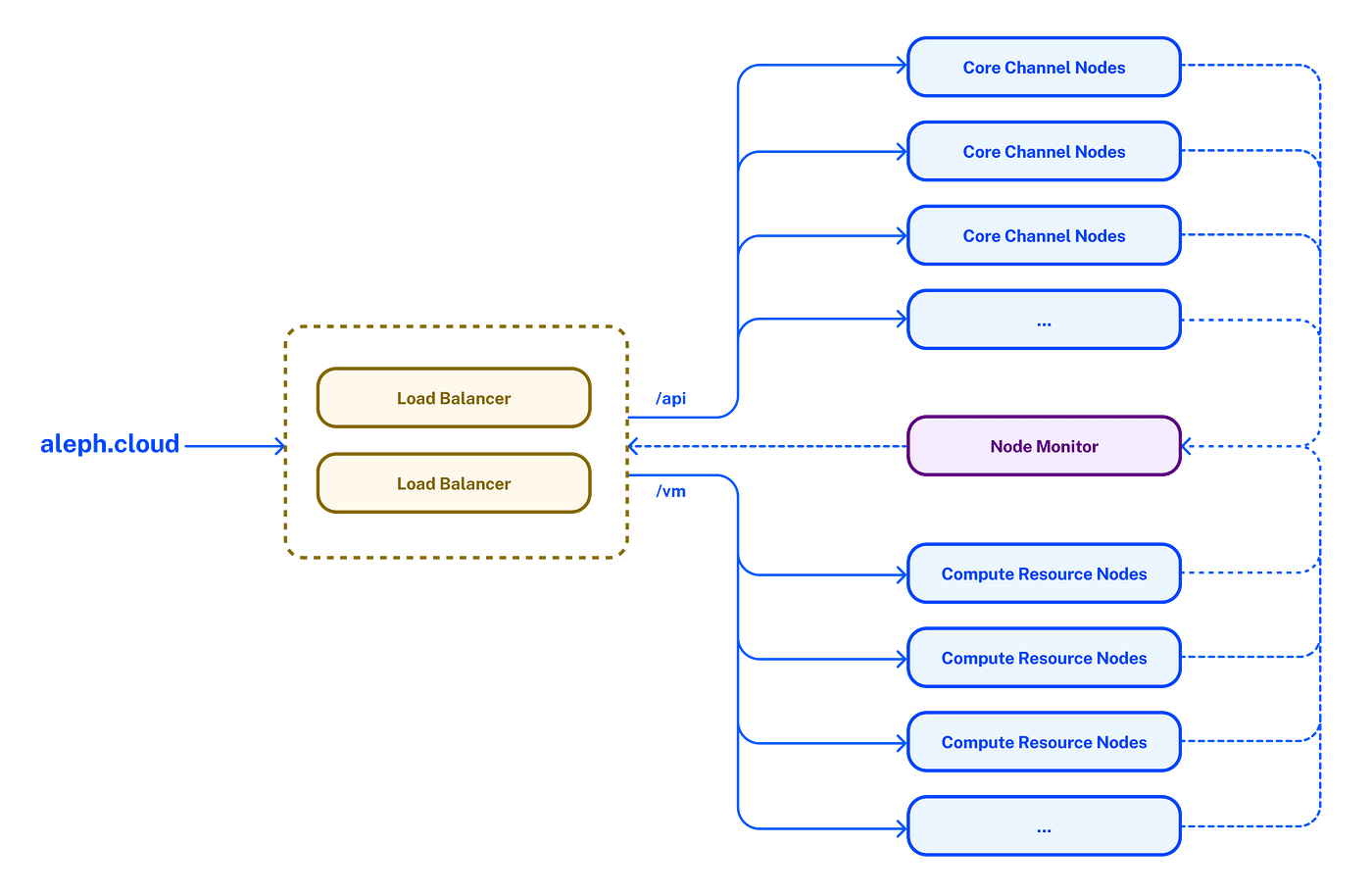Aleph.im Load Balancers Go Live on the Network


Aleph.im, an open-source cross-chain decentralized cloud project finishes its roadmap for Q1 with its Load Balancers going live on the network!
Aleph.im, introduces its load balancers for APIs and computation!
Routing vs Executing
With the growth of the network and more applications built on top of it, their current endpoints became a limiting factor and centralized much of the traffic. So far, they provided two HTTPS API endpoints to the network, namely api1.aleph.im and api2.aleph.im.
These endpoints run the same software that runs the Core Channel Nodes. This in combination with aleph.sh, a reference Compute Resource Node to run your backend on Aleph Virtual Machines, a more suitable solution was needed to route incoming requests and handle the increasing traffic.
This is why they are introducing open-source load balancers for Aleph.im. The load balancers distribute incoming requests across Core Channel Nodes and Compute Resource Nodes instead of executing the requests themself. High availability is provided by the Aleph nodes and by using DNS Failover, where multiple load balancers are ready to handle client requests. The load balancers constantly monitor the availability of CCNs and CRNs in order to forward traffic to healthy nodes.


Aleph.im Load Balancer Setup
How to Access
- Aleph.im provides official load balancers on the domain
aleph.cloud. - You can now replace
https://api2.aleph.im/byhttps://aleph.cloud/in your dapp to take advantage of the load balancers. - Official nodes managed by Aleph.im can be accessed via the load balancers on
official.aleph.cloud. - The Aleph.im Load Balancers are available on GitHub and are built on top of the open-source Traefik Cloud Native Application Proxy.
About Aleph
Aleph.im is a distributed cloud platform that provides serverless trusted computing services, file storage, and indexing solutions to replace traditional centralized cloud computing. It provides dApps of any chain instant access to database solutions thanks to its scalable peer-to-peer network and programming language-agnostic interface.
⏩ SOURCE




